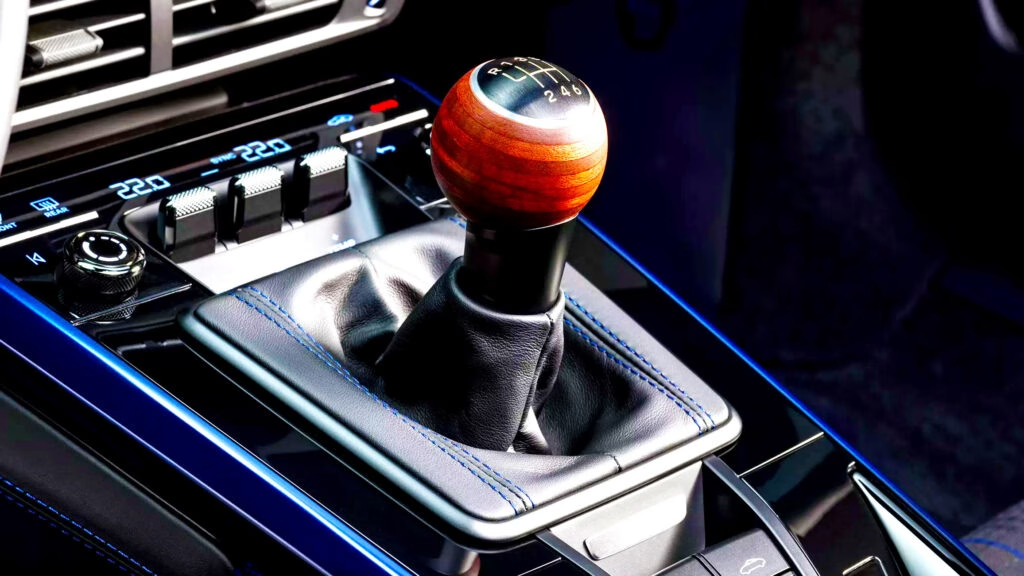Why Are Manual Transmissions Disappearing from Most Sports Cars?
Let’s be honest: the manual transmission is on the endangered species list. For many automakers, the stick shift was tossed aside years ago in favor of faster, more efficient automatic and dual-clutch gearboxes. The reason? It’s a cocktail of changing consumer tastes, stricter emissions rules, and the relentless march of hybrid and electric tech. These days, most buyers want convenience, not the dance of clutch and gear lever. But for a passionate minority, that dance is the whole point.
Porsche, though, refuses to let the manual fade quietly into history—at least not in the 911 lineup. While other brands have gone all-in on paddle shifters, Porsche keeps the three-pedal flame alive. The catch? As more 911 models go hybrid, the window for a manual shrinks. Yet, against the odds, the manual 911 is still hanging on.
Which Porsche 911 Models Still Offer a Manual Gearbox?
Here’s the current lay of the land: if you want to row your own gears in a new Porsche 911, your choices are limited to the GT3 and the Carrera T. That’s it. The standard Carrera and Carrera S? No dice. The GTS and Turbo? Both have gone hybrid, with their electric motors integrated into the PDK automatic transmission—making a manual option a technical non-starter.
This isn’t just a matter of nostalgia. Porsche’s decision to keep the manual alive in select models is driven by real-world demand, especially in places like the US and the UK. According to Michael Rösler, the man in charge of the 911 lineup, only about 2–3% of European Carrera buyers opt for a manual. That’s barely a blip on the radar for suppliers. But in the US, it’s a different story: roughly half of GTS customers chose the manual in recent years. That’s a massive swing, and it’s why the Carrera T exists at all.
Why Is California So Important for the Future of Manual 911s?
Here’s where things get interesting. While Europe’s appetite for manuals is tepid, California bucks the trend. Convertible-loving Californians are pushing for more manual options, especially in open-top 911s. Rösler has hinted that this demand could tip the scales, making it more viable for Porsche to offer manual gearboxes in future convertible models.
Think about it: California is a bellwether for car culture. If enough buyers there want to shift their own gears, Porsche listens. In fact, recent spy shots of 911 Cabriolet prototypes—wearing GT3 bodywork—suggest that Porsche is at least testing the waters for a manual convertible. It’s not a done deal, but it’s more than just wishful thinking.
How Does the Manual 911 Driving Experience Compare to the Automatic?
Let’s get one thing straight: the manual 911 isn’t about lap times. Sure, Porsche’s PDK dual-clutch is faster—sometimes embarrassingly so. But the manual is about connection. It’s about feeling the engine through your fingertips and toes, about nailing that perfect downshift, about being part of the machine rather than just a passenger.
The latest Carrera T, for example, borrows its cable shifter from the GT3, giving it a crisp, mechanical feel that’s pure joy for enthusiasts. It’s not just nostalgia—it’s a different kind of performance. In fact, Porsche’s own data shows that manual-equipped GT3s are consistently among the most satisfying cars for owners, even if they’re not the quickest on paper. Sometimes, numbers don’t tell the whole story.
What’s Next for Manual Transmission Fans?
With the hybrid wave rolling in, the future of the manual 911 is far from guaranteed. The technical hurdles are real—hybrid systems and manual gearboxes don’t play well together. But Porsche isn’t giving up just yet. There’s talk of a new convertible GT3 or even a Speedster variant that could keep the manual alive for a while longer, especially if American demand stays strong.
Industry analysts point out that niche demand can sometimes keep a feature alive longer than you’d expect. Look at how vinyl records made a comeback. The manual 911 might just be the automotive equivalent—a cult favorite that refuses to die.
What Should Enthusiasts Do If They Want to See More Manual 911s?
If you’re one of those diehards who can’t imagine a sports car without a clutch pedal, here’s the bottom line: speak up and show up. Porsche is watching the numbers closely. When buyers vote with their wallets—especially in key markets like California and the US at large—it sends a message that’s hard to ignore.
And don’t underestimate the power of community. Car clubs, online forums, and social media campaigns have real influence. The more visible the demand, the more likely Porsche is to keep the manual alive, even if only in special models.
The big takeaway? Keeping the manual 911 isn’t about perfection—it’s about smarter adjustments. Start with one change this week—maybe a test drive, maybe a call to your dealer—and you’ll likely spot the difference by month’s end. The future of the stick shift might just be in your hands.

